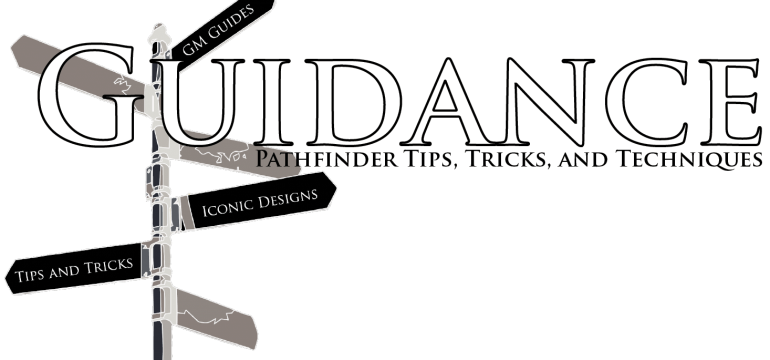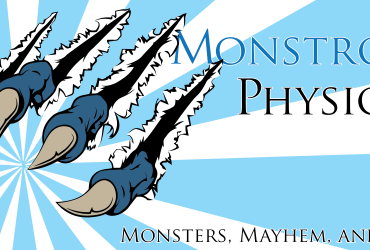Hey Know Direction fans!
So last week I took some time to sit down and name five things I really liked about Starfinder (my “boons”) and one thing I didn’t like (my “bust”). Now, for the sake of being honest, there’s more then just ONE thing that I’m not crazy about as far as Starfinder’s design goes, and after a LOT of debate I’ve decided that I’m going to share five more things I don’t like about the system, and end it with one more thing I do like. Basically, a reverse from last week’s article.
Before I get started, I want to remind everyone that I like Starfinder as a whole, and just because I’m pointing out problems with the system doesn’t make it bad. Instead, I believe that honestly acknowledging a game’s problems will make sure that designers and developers have ample opportunity to fix those problems in future products and expansions to the system. After all, Starfinder’s legacy won’t rest solely in the Core Rulebook; it’ll be in the sum of everything that has ever come out for it ever. Also, please don’t be a jerk and try to use my article and throw it on the forums to attack Paizo developers or win arguments because “this guy who’s good at game design said it first” or whatever. My articles are meant to improve everyone’s knowledge of Pathfinder / Starfinder and of game design, not to be wielded like brutish clubs for petty reasons. (And yes, if you’re planning on using my article as an ace in the hole to win an argument, your reasons are PETTY. Win your own argument with your own words, sweat, and tears!)
With that in mind, I’m ready to go! Fighting words ready!
Bust #1 — Spellcaster Utility
Alright, this one is going to be tricky to explain because it requires a lot of knowledge about past iterations of the 3.5 engine and a bit of foresight. Basically, in 3.5 Spellcasters were always seen as “too useful,” and one of the problems that martial characters “had” is that they can’t problem solve the way spellcasters can. Sure, a fighter can fight good, but the wizard can completely bypass entire encounters (if the GM lets them) with teleport. At the very least, the chance of inconsequential overland combats goes WAY down if your wizard is bringing you to the desired location in a blink of an eye. Martials can’t do anything about this.
So as spellcasters level up in Starfinder, their single target damage spells tend to stall out a bit. They start the game with super powerful damage-dealing spells (i.e. mind thrust’s 2d10 against an average of around 16 Hit Points and Stamina Points combined at 1st level), likely to try and offset Pathfinder’s “terrible low levels” situation that most spellcasters have in the first four or five levels or so. This is good. But by the time you’re getting spells like snuff life, the average damage of these spells really drops, which encourages spellcasters to take powerful battlefield control spells and utility spells instead. You know, the things that martials already couldn’t do. And doing this is REALLY easy in Starfinder if you take a lot of variable-level spells. Renenber that spell effects do not scale at all in Starfinder, so when a variable-level spell is no longer worth it, swap it out for a utility spell that ages better. Mind thrust (1st level) might be negligible after level 3 or so, but share language’s effects are the same (and useful) no matter your level, after all.
Maybe this was SF’s design intent, but in my mind this system of, “Our damage output drops and most spells don’t scale” just exacerbates 3.5’s problem with spellcasters versus martials. Time will tell if I’m right, but I personally think that a proper fix needs to be willing to allow martials have some of that high-quality utility that spellcasters have, not simply make martials better at the things they’re already good at by weakening spellcasters.
Bust #2 — Technomancer Branding
So I’ve come to the conclusion that the technomancer is a great class with one bad class feature (the spell cache’s bonuses don’t amount to much useful) that was HORRIBLY branded by Paizo’s team. All throughout the playtest and even the marketing campaign, the technomancer was sort of put into this role of “the wizard of tomorrow,” but in terms of the actual abilities it gets and the spells at its disposal, the technomancer does not play like a Pathfinder Wizard, or even a Pathfinder Socerer. They don’t have great control, they lack a lot of single-target spells and effects, and most of the best sorcerer/wizard spells in terms of utility found their way into the mystic’s hands. But do you know what they’re REALLY good at doing? Shooting people with guns, believe it or not. They have 3/4 BAB, they have supercharge weapon (which they can get at-will with an 11th level spell hack), and they (like any other character, can pick up Weapon Proficiency and Weapon Specialization with a longarm or a sniper rifle and just go to town with it, supercharging before every shot. They can even put touch spells into grenades and chuck them, touching one target with the grenade’s spell as it expodes.
Technomancers aren’t the wizard. Technomancers are the magus. But all of the marketing and all of the flavor make them seem like they’ll play like the wizard, so when you realize they can’t, it is jarring. As a result, this is a bust for me in terms of advertising the class, rather than the mechanical rules themselves. Change how you think about the technomancer and I think you’ll find it’s a great class with a lot to offer. But if you’re looking for a wizard, you won’t find it here. (Although my buddy Matt, who worked with me on the Starfarer’s Companion, DID covert the wizard to Starfinder!)
Bust #3 — Solarian MAD
So the solarian has this really strange problem with ability scores, and it isn’t necessarily that they need two of them. It’s that they need the two ability scores that do the least in the entire game. Starfinder moved a lot of emphasis onto Dexterity and Intelligence; they govern most of the skills and provide you with more benefits than any other ability score (except perhaps Constitution). Strength, on the other hand, determines to-hit and to-damage with melee weapons (and thrown weapons), your Athletics skill, and the amount of Bulk you can carry. Charisma … adds to Charisma skills. That’s it. So when you’re a solarian and you’re investing all of your ability points into Strength and Charisma, you’re not getting a whole lot of return on those purchases. You aren’t boosting your saves, most of your skill bonuses are low, since you’re probably putting any final “good” ability score value you have into Constitution. Then when you level up, two out of four of your new ability increases are almost guaranteed to go into Strength and Charisma, which means that your AC, saves, and skill bonuses are going to probably lag behind even more as you level up.
I know Starfinder hasn’t been too keen about X to Y in terms of ability scores, but the solarian could have REALLY used something to Charisma to lessen the blow of its ability scores; Charisma instead of Wisdom on things would have been REALLY helpful, flavoring it as “communing with the cosmic way” or something. It might make envoys want to dip solarian, sure, but see #5 on Multiclassing.
Bust #4 — Exocortex Mechanic
Okay, so I played this class a LOT during the playtest, and I wasn’t really satisfied with the exocortex. The mechanic’s exocortex is flavored as “the combat mechanic,” the “Iron Mad,” but when you actually sit down to play the class, nearly NONE of the exocortex’s abilities are designed for combat. You get combat tracking, the ability to track multiple targets, and that’s it. All of the drone mods you can pick from are utility-focused, all of the other powers involve skills, and in the end, you’re light years in damage behind the soldier and the solarian. (Trust me, I played my mechanic with both in a party!)
This might not have been so bad if there were more mechanic tricks specifically for the exocortex mechanic, but there’s not. There’s one or two that interact specifically with the exocortex, and they don’t give meaningful combat buffs. I think that’s what the exocortex needs to come into its own — the ability to do things a drone can’t and make the mechanic into a fighting machine instead of the guy who hides behind a robot. This is 100% an area that Paizo can improve on in future books, and hey! If you don’t want to wait, I wrote a SF product that’ll do it for you. Huzzah!
Bust #5 — Multiclassing
As many of you know, I like multiclassing. I think that it adds an extra layer of interest to a character when they have one or two diverse job sets. But man, multiclassing is PAINFUL in Starfinder. Sure, they threw spellcasters a bone with stacking caster levels, but in general martials now suffer from “Do I wanna” REAL bad, especially the soldier. I’m sure the idea was to give the players hard choices about whether or not they REALLY wanted to dip into another class for its low-level powers, but now martials have the, “It’s not worth it” problem too — what you’re loosing is always so much greater than what you’re gaining that it isn’t a choice you can really afford to make and still contribute to the party at high levels. For instance, a soldier that multiclasses is delaying his access to iterative attacks, effectively. Those extra attack dice are a HUGE part of the soldier’s damage output, so why would he dip a level into operative for a measly d4 trick attack? I consider you guys intelligent people, so I’m not going to go through and list every class’s “Do I wanna,” but they’re all there and they tend to be crucial elements that you can’t really play without, rather than neat quality life things that you have to contrast with a level somewhere else. Like I mentioned, it’s like deciding to multiclass as a spellcaster in PF — no matter how flavorful it might be to pick up a new skill or trade, power-wise nothing is better than sticking with your class. Granted, this one is the very last “problem” on my list because I’m not sure if it’s one you could ever actually solve, but Starfinder seems to hold true the Pathfinder ideology that multiclass characters are outliers, and we should deincentify their existence.
A Boon — Bulk
Holy crap, have I ever told you about how much I LOVE the Bulk system? It is the smartest thing, like, EVER. If you don’t know, carrying capacity in Pathfinder was a pain in the ass. Bulk is Starfinder’s solution. Instead of tracking pounds and ounces, the Bulk system assigned a number to each item; each point of Bulk an item has is roughly equivalent to 10 pounds. Some items have less than 1 Bulk, but their weight isn’t negligable; this is ‘light bulk’ and is noted with an ‘L.’ Light Bulk basically doesn’t count against your carrying capacity unless you have 10 of them, at which point they equal 1 Bulk.
So basically, Bulk gives you an easy number (your Strength score) and an easy tracking system (single-digit numbers) and let’s you track encumbrance without ever having to look at the CRB’s tables and charts. Even though Strength is undervalued in SF, I think this will go a long way to getting people to invest in Strength. Seeing that they can carry an extra Bulk or 2 just for boosting it at one of the ability score check points is going to be tempting; I know I boosted my Strength in Fallout many times just to get that carrying capacity number up. This is one of my favorite additions to the game, and one that I think should be applied everywhere. Carrying capacity doesn’t matter in PF because it’s too darn hard to calculate, but Starfinder makes it so easy that I can see GMs being less likely to hand waive it.
That’s it for this week! Enjoy your holiday if you’re state side, and if you were in Texas during Hurricane Harvey, please stay safe! So until next time, I’m Alex Augunas and I’m always here for YOU when you need a little bit of Guidance. Take care!
Alexander “Alex” Augunas has been playing roleplaying games since 2007, which isn’t nearly as long as 90% of his colleagues. Alexander is an active freelancer for the Pathfinder Roleplaying Game and is best known as the author of the Pact Magic Unbound series by Radiance House. Alex is the owner of Everyman Gaming, LLC and is often stylized as the Everyman Gamer in honor of Guidance’s original home. Alex also cohosts the Private Sanctuary Podcast, along with fellow blogger Anthony Li, and you can follow their exploits on Facebook in the 3.5 Private Sanctuary Group, or on Alex’s Twitter, @AlJAug.







Honestly, I was a little disappointed by the Exocortex. I came in expecting a digital familiar. My very own Cortana. Instead, I got a linear list of combat buffs that seem nice on paper but may fall short mechanically.
I have a reputation in local PFS play for playing Summoners all the time. I wanted to surprise everyone by going Exo on my mechanic. Granted, drones seem super fun, but I hope we get more 1st party options down the line.
I also agree that the solarian’s key ability being Charisma is odd seeing as how wisdom based their skill list is, and how not so useful charisma is to wisdom based classes in pathfinder, you would’ve thought that Paizo would carry that over by letting the Solarian’s key ability be wisdom.
The thing that bothers me about Solarions is how their primary stat, Charisma, does not relate directly to their primary role, which seems to be frontline combat. I get the feeling that a majority of them in SFS play are going to be Lashunta to make up the difference.